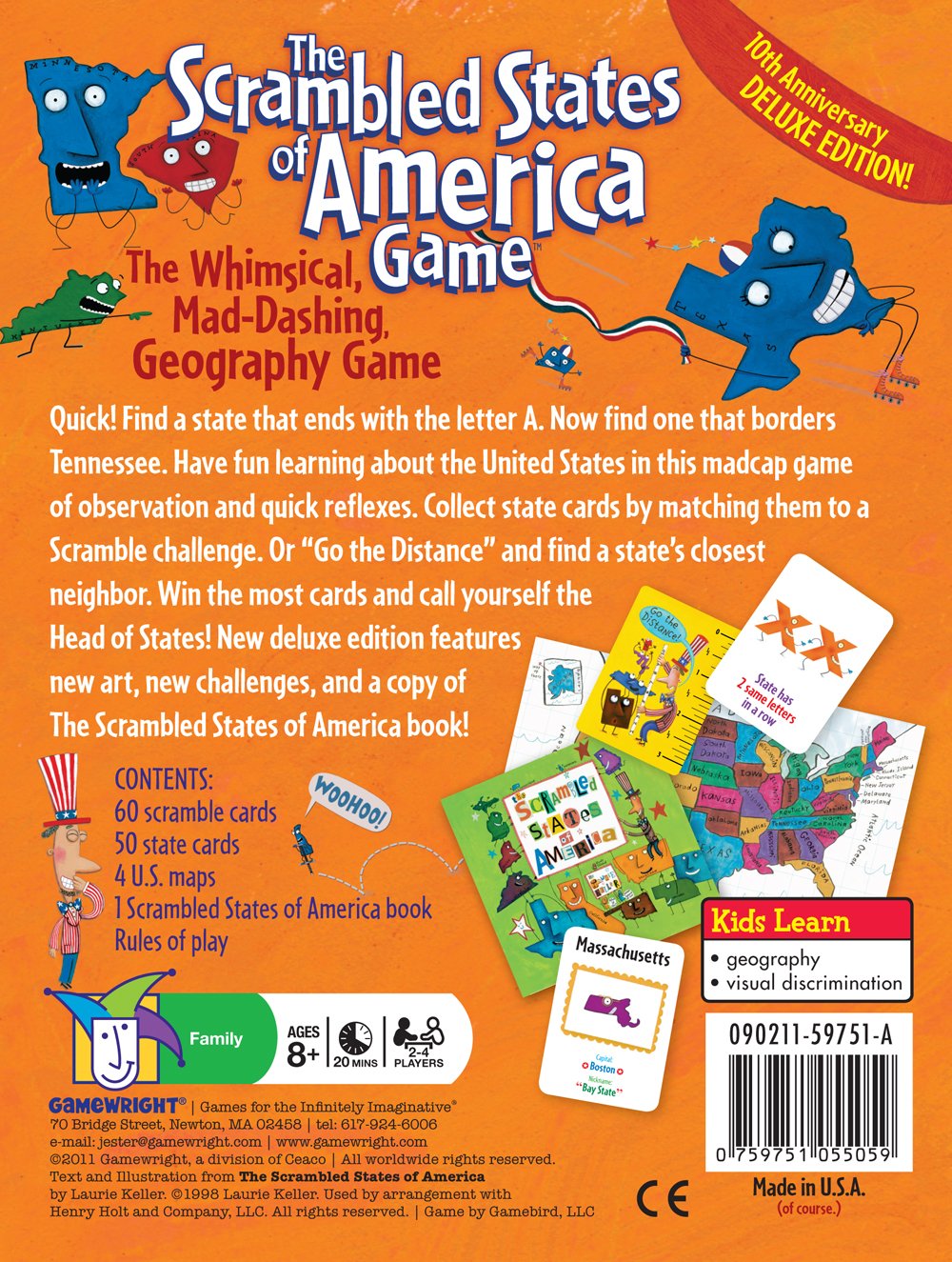
Last Thursday on my thrifting trip, after going to our weekly family liber school, I found the card game that goes with the above book, for 4 bucks at Savers. So we played the game today for my Wednesday Geography/History Day of our Gameschooling. Even though I wasn’t organized enough to have scouted out the companion picture book from the public library, I found that the book is read aloud on YouTube. Hooray! So we listened to and watched the video and then played the game.
The game was missing the maps and directions. I found the directions online and had my own map of the USA laid out on the table.
The game got loud and raucous with the racing to be the first one to slap the table with the right card to answer the challenge/quiz question. I have a wide range of ages in our gameschool, 9 to 15. The 15 year old won, but he said he didn’t have fun. Go figure! He said it got too loud. That’s interesting, because he is often loud himself. The 9 year old had a hard time keeping up. So everyone but the outliers enjoyed it. I thought it was a fun way for kids to learn states’ locations, capital cities, and nicknames. I love games like this when it’s “All Play” every single round. Nobody has to wait for a turn. The drawback, however, is for the slower processing kids. Sometimes it’s better to strike a balance and have some round be “All Play” and some be just targeted at one person, one by one. Next time we play this I’m going to remember that and alternate between “All Play” and “Single Play,” just so the younger student can have more opportunities to process the challenge without getting beat.

We also played Two Truths and a Lie, which is the easiest DIY Geography/History game you can do. I passed out my cheery Usborne books. They are so perfect for kids! I love that they show connections between history, fashion, geography, science, and technology in such visually appealing ways. I also love the lift-the-flap books. To play the game, I have my students/kids find three facts in a history or geography book that they find interesting. Then they write them down, and change one of them to a lie. Then after we are all done writing, we take turns sharing our three statements. We then discuss why we think the statement is a fact or lie. Sometimes the decision is based on knowledge of history, sometimes it is based on the reading of body language. We then vote on which statement we think is the lie and which ones are truths. We keep score and whoever has the most points at the end of the allotted time wins!





Here is my backstory to gameschooling and tips on building a gameschool collection on a budget.
Here are some other gameschooling days we’ve enjoyed.
